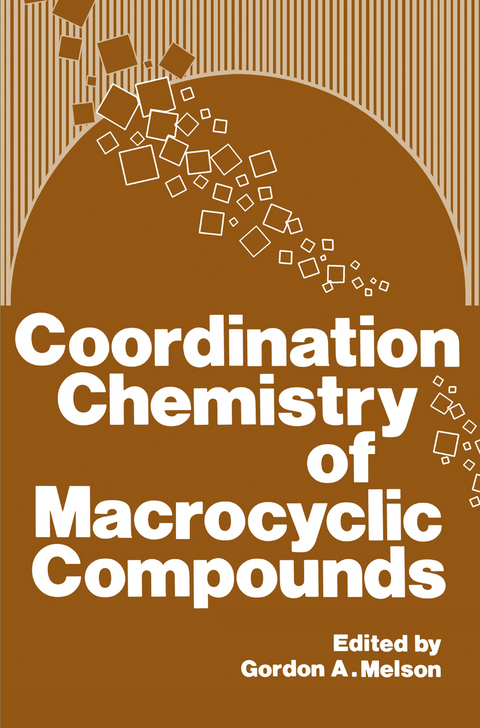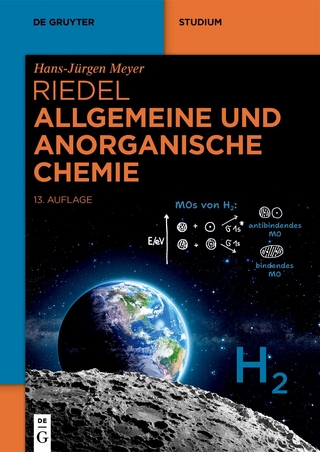
Coordination Chemistry of Macrocyclic Compounds
Springer-Verlag New York Inc.
978-1-4613-2930-5 (ISBN)
Chemists have been aware of the existence of coordination compounds con taining organic macrocyclic ligands since the first part of this century ; however, only during the past few years have they expanded research into the chemistry of these compounds. The expansion was initiated in the early 1960s by the synthesis and characterization of compounds containing some new macrocyclic ligands. The synthesis of compounds which may serve as model systems for some natural products containing large rings as ligands provided the main goal for the early expansion of research effort; indeed, a recurrent theme behind much of the reported chemistry has been the analogy between synthetic macrocyclic compounds and many natural-product systems. More recently, the emphases of reported research have ranged over the whole spectrum of chemistry, and the number of publications that discuss macrocyclic chemistry has increased at a dramatic rate. The completed research has been reported in a variety of journals throughout the world but there has been no previous attempt to bring the major developments together under one cover. This book, therefore, attempts to satisfy the need for a single source in which there is both a collection and a correlation of information concerning the coordination chemistry of macrocyclic compounds. The chapters in this book discuss various aspects of macrocyclic chemistry, and while these chapters as a whole constitute an in-depth survey of the state-of the-art of the field, each chapter is written as a complete unit.
1. General Introduction.- 1. Introductory Comments.- 2. General Comments.- References.- 2. Synthesis of Macrocyclic Complexes.- 1. Introduction.- 2. Tridentate Ligands.- 3. Tetradentate Ligands.- 4. Pentadentate Ligands.- 5. Sexadentate Ligands.- 6. Binucleating Ligands.- 7. Clathrochelates.- 8. Conclusions.- References.- 3. Thermodynamics and Kinetics of Cation-Macrocycle Interaction.- 1. Introduction.- 2. Parameters Determining Cation Selectivity and Complex Stability.- 3. Macrocyclic Effect.- 4. Table of Thermodynamic Data.- 5. Kinetics.- References.- 4. Structural Aspects.- 1. Introduction.- 2. Class 1: Cyclic Amines-Saturated Polyaza Macrocycles.- 3. Class 2: Cyclic Imines and Cyclic Amine-Imines (Unsaturated Polyaza Macrocycles with all Nitrogen Atoms Coordinated).- 4. Class 3: Macrocycles Including a 2,6-Pyridyl Group.- 5. Class 4: Tetraazamacrocycles with 2-Imino(or 2-amido)-benzaldimine Chelate Rings.- 6. Class 5: Dibenzo[b,i]-l,4,8,11-tetraazacyclotetradec-2,4,6,9,11-hexaenato(2–) Compounds.- 7. Class 6: Cyclic Hydrazines and Hydrazones.- 8. Class 7: Cyclic Tetraethers and Tetrathiaethers (Tetraoxo- and Tetrathiamacrocycles).- 9. Class 8: Macrocycles with More Than One Type of Heteroatom.- 10. Class 9: Binucleating Macrocycles.- 11. Class 10: Cyclic Phosphazenes.- 12. Class 11: Clathrochelates.- 13. Conclusion.- References.- 5. Ligand Field Spectra and Magnetic Properties of Synthetic Macrocyclic Complexes.- 1. Introduction.- 2. Nickel Complexes.- 3. Copper Complexes.- 4. Cobalt Complexes.- 5. Iron Complexes.- 6. Manganese Complexes.- References.- 6. Chemical Reactivity in Constrained Systems.- 1. Introduction.- 2. Predominantly Metal-Centered Reactions.- 3. Reactions of the Macrocyclic Ligands.- 4. Reactions Involving Free Radicals, Unusual OxidationStates, and Excited States.- References.- 7. Metal Complexes of Phthalocyanines.- 1. Introduction.- 2. Molecular Structure.- 3. Electronic Structure.- 4. Spectral Properties.- 5. Synthesis of New Derivatives.- 6. Redox Reactions.- 7. Aggregation of Complexes.- 8. Chromium Complexes.- 9. Manganese Complexes.- 10. Iron Complexes.- 11. Cobalt Complexes.- 12. Group IV Metal Complexes.- 13. Catalytic Activity.- 14. Comparison of Chemistry of Chromium, Manganese, Iron, and Cobalt Complexes.- References.- 8. Coordination Chemistry of Porphyrins.- 1. Introduction.- 2. Synthesis.- 3. Structure.- 4. Reactions.- 5. Chlorins and Corrins.- References.- 9. Physicochemical Studies of Crown and Cryptate Complexes.- 1. Introduction.- 2. Synthetic Methods.- 3. Metal-Cation Complexes: Preparation and Structure.- 4. Complexes in Solutions: Experimental Techniques.- 5. Conclusion.- References.- 10. Natural-Product Model Systems.- 1. Introduction.- 2. Macrocyclic Complexes as Models.- 3. Modeling of Heme Proteins.- 4. Binuclear Systems.- 5. Comments on Vitamin B12 and Related Inorganic Systems.- References.
| Zusatzinfo | XIV, 664 p. |
|---|---|
| Verlagsort | New York, NY |
| Sprache | englisch |
| Maße | 155 x 235 mm |
| Themenwelt | Naturwissenschaften ► Chemie ► Anorganische Chemie |
| Naturwissenschaften ► Chemie ► Physikalische Chemie | |
| ISBN-10 | 1-4613-2930-2 / 1461329302 |
| ISBN-13 | 978-1-4613-2930-5 / 9781461329305 |
| Zustand | Neuware |
| Haben Sie eine Frage zum Produkt? |
aus dem Bereich


